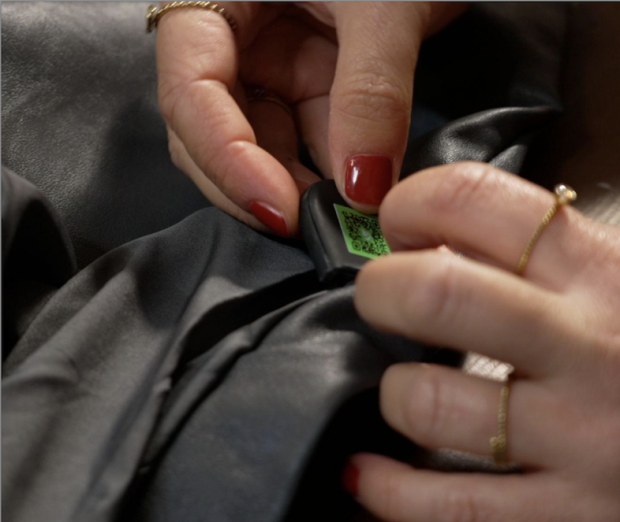E-commerce appears to be highly polluting and often lead products apparently random traveling for long distances as already acknowledged by recent surveys.
Also Greenpeace Italy has highlighted this problem and the vast negative consequences for the environment through a recent survey that highlighted how fast fashion brands’ e-commerce returns can travel up to 10,000 km per single order.
These are the results of a report carried out by tracking the movement of clothes and parcels of clothes returned multiple times traveling up to tens of thousands of kilometers between Europe and China, at no cost to the buyer and at negligible cost to the manufacturing company, but with enormous damage to the environment.
Greenpeace Italy’s Investigative Unit has been conducting a study that lasted nearly two months, in collaboration with RAI 3’s Italian television program “Report,” tracing the journeys made by a number of garments in the fast-fashion sector purchased and returned through e-commerce platforms.
Greenpeace Italy presented all the results in a report recently presented by the TV program and titled “Fashion on the Road. The hidden cost of online returns: the thousand turns of fast-fashion that pollutes the planet.”
To conduct the investigation, 24 items of fast-fashion clothing were purchased on e-commerce platforms of Amazon, Temu, Zalando, Zara, H&M, OVS, Shein and Asos.

Photo: Greenpeace Italy
Greenpeace study
Before making the returns, Greenpeace and Report hid a GPS tracker in each dress, thus managing to track its movements, discover the means of transportation used, and study the sellers’ supply chain.
In 58 days, the packages collectively traveled about 100,000 kilometers through 13 European countries and China. On average, the distance traveled by products for delivery and return was 4,502 kilometers. The shortest route was 1,147 km, the longest was 10,297 km.
The most used means of transportation were trucks, followed by plane, van and ship. The 24 garments were sold and resold a total of 40 times, with an average of 1.7 sales per garment, and returned as many as 29 times. To date, 14 out of 24 garments (or 58%) have not yet been resold.

Photo: Greenpeace Italy
Graphic showing a returned article’s travel
Looking at the individual companies, all of Temu’s garments were shipped from China, have traveled more than 10 thousand kilometers (mainly by air), and, to date, none are reported to have returned to the seller’s possession after the first return.
Two garments from Asos have traveled, on average, over 9,000 kilometers transiting as many as ten European countries.
Asos, Zalando, H&M and Amazon topped the list for the average number of resales at 2.25 times, while 100% of the garments returned to Temu, OVS and Shein were not resold.
“Our survey confirms how the ease with which returns can be made in the fast-fashion sector, almost always free of charge to the customer, generates hidden and very significant environmental impacts,” said Giuseppe Ungherese, head of Greenpeace Italy’s Pollution campaign.

Photo: Greenpeace Italy
Graphic showing a returned article’s travel
“While some European nations have already legislated to curb or prevent the destruction of returns, the same cannot be said for the practice of facilitated returns, which encourages compulsive buying of disposable clothes, with serious consequences for the planet,” Ungherese added.
To compile this survey, Greenpeace collaborated with Indaco2, an Italian start-up that calculated the estimated emissions produced by the transportation and packaging of clothing.
The average environmental impact of transporting each order and return corresponds to 2.78 kg of CO2, a value of which packaging accounts for about 16%.
On average, 74 g of plastic and 221 g of cardboard were used for the packaging of each package. For an average pair of jeans weighing 640 g, transporting the ordered and returned garment corresponds to an increase of about 24% in CO2 emissions. The estimated average fuel cost for transportation is €0.87.
The online clothing sector is among the most relevant in Italian Business to Consumer (B2C) e-commerce, according to Greenpeace Italy. However, only three percent of fashion is circular and just one percent of new clothes are produced from old clothes, while every second a truckload of clothing ends up in a landfill or incinerator.
According to the organization, the fashion industry is among the most polluting production sectors because it uses huge amounts of raw materials. In the EU alone, textile consumption is the fourth-largest sector in terms of impact on the environment and climate, and the third largest in terms of water and land consumption. Every year, 5.8 million tons of textiles are thrown away in the EU, about 12 kg per person.

Photo: Greenpeace Italy
Greenpeace study
Globally, textile production and consumption doubled from 2000 to 2015 and could triple by 2030.
READ ALSO:




